Context:
This Article is based on the news “How bad is India’s single use plastic crisis?” which was published in the Down to Earth. According to a report launched during the Sixth United Nations Environmental Assembly (UNEA-6) at the United Nations Environment Programme (UNEP), the street food sector across India depends heavily on single use plastics.
Single Use Plastic (SUP) in India: Definition, Status, and Global Impact
- Definition: It refers to a plastic item intended to be used once for the same purpose before being disposed of or recycled.
- Status: The annual share of banned single use plastic items is roughly 0.6 million tonnes per year.
- As per report “Plastic Waste Makers Index 2019”, India was the 13th largest investor in single use plastic polymer production globally.
- India ranked 3rd globally, contributing 5.5 million tonnes of single use plastic waste and ranked 94th with per capita single use plastic waste of 4 kg per year, indicating that India addresses roughly 11% of the single use plastic waste.

Identification of single use Plastic Items:
- On the Basis of Experts’ Report: The identification of single use plastic items to be phased out was done on the basis of a report by an expert committee on single use plastics constituted by the Department of Chemicals and Petrochemicals (DCPC) under the the direction of the Union Ministry of Chemicals and Fertilizers.
- Parameters for Assessment: The assessment was conducted by comparing two pillars:
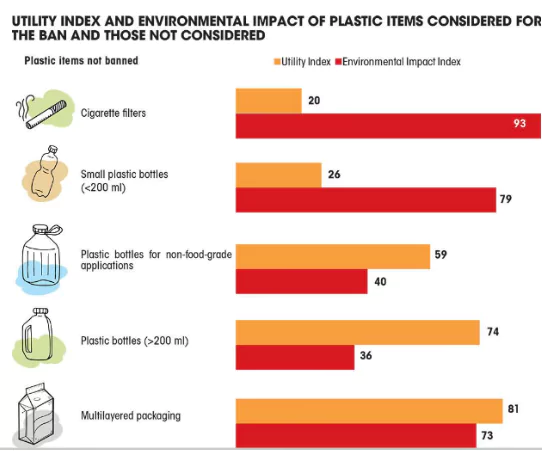
Challenges and Consequences of Single-Use Plastic in India:
-
In Laws & Regulations:
- Oversimplified Definition: The definition does not distinguish between necessary and unnecessary plastics or between recyclable and non-recyclable plastics.
- Ban on Limited Items: India had banned 19 selected single use plastic items while a lot more were in circulation and continue to be.
- A significant amount of non-recyclable plastics that are problematic have been allowed to still circulate on the basis that India does not have alternatives for those plastics.
- Unclear Criteria for Identification: Some items that are low on Utility Index and high on Environmental Impact have not been considered for phasing out. This leaves big corporations least affected.
- It is unclear what yardstick was actually considered for the items listed for phasing out.
- Loopholes in EPR Policy: It specifies target collection and recycling, ignoring the fact that some single-use plastics that are not banned (multilayered packaging) are non-recyclable.
- EPR: It is a policy strategy that holds producers responsible for the end-of-life consequences of their goods and enables proper collection and disposal of items after use.
-
Severe Impacts on Biodiversity: The United Nations Environment Programme’s country-wise plastic data revealed that India mismanages 85% of its plastic waste.
- In Marine Life: This waste, predominantly single use in nature, is dumped or even burnt at roadsides, choking drains and flowing into the rivers from where it disperses into the ocean, harming marine life directly or indirectly.
- As it degrades into micro- and nano-sized particles over months, years and decades.
- On Earth’s Surface: Emissions from the production, use and disposal of single use plastics are significant in their contributions in degrading the country’s environment.
- It could account for 5-10% of greenhouse gas emissions by 2050.
- As per the World Wildlife Fund, plastic is harmful to the environment as it is non-biodegradable and takes years to disintegrate. But single use plastics are worse, never breaking down completely, become microplastics and continue to pollute the environment.
-
Economic Impact: Cleaning up single use plastic pollution and dealing with its consequences pose significant costs to local communities, municipalities and governments.
-
- As per a 2021 World Wildlife Fund report, Plastics: The Costs to Society, the Environment and the Economy, “The lifetime cost of the plastic produced in 2019 will be at least US $3.7 trillion, which is more than the GDP of India.”
- The Lifetime Cost: It includes the cost for management of waste, cost incurred due to loss of ecosystems, health costs and mitigation measures to fight plastic pollution and climate change.
- Impact on Tourism Sector: Such a plastic waste damages the aesthetic value of tourist destinations and impacts on the tourism sector and economy.
- Lack of Alternatives: There is a lack of alternatives for SUPs in the market due to no supportive infrastructure or incentives provided for encouraging the production of alternatives in large volumes.
Case Study- Impact on Himalayas:
- Microplastic Deposition and Accumulation: It has been found in the Himalayan mountains, rivers, lakes and streams. These microplastics can be trapped in glaciers for a long time and released into rivers during snow melting.
- Microplastics are formed by the degradation and the fragmentation of large plastic pieces that are improperly disposed of.
- Reasons of Plastic Accumulation: Rapid and unplanned urbanisation, changing production and consumption patterns and a quantum jump in tourist footfalls.
- A Cause of Concern: Unscientific plastic disposal is causing soil and water pollution in the Indian Himalayan Region and impacting its biodiversity, which is having an adverse impact on the fresh water sources that communities downstream depend on.
- The Himalayan Region is a critical source of water, feeding a number of major rivers of India that include the Indus, Ganges and Brahmaputra river systems.
|
Survey Conducted By The Centre For Science And Environment (CSE):
- About: The CSE conducted three different surveys to understand the extent of implementation and enforcement of the ban on single use plastic items across India (with a blend of digital means and interaction with stakeholders such as citizens, retailers and street vendors).
Key Findings of the CSE Survey:
- On Law Enforcement: There is weak enforcement of SUPs ban by SPCBs and local governments.
- On Environmental Compensation: Retailers and street vendors continue to be levied with Environmental Compensation by officials of urban local bodies while units producing and selling single use plastic items continue to manufacture them uninterruptedly.
- On Progress: Provisions of Comprehensive Action Plan, especially the deliverables that were to be implemented on the ground have not been adhered to and there is no update from the responsible authority on the assigned task.
- Awareness campaigns were intensive only during the initial months of the ban, and have nosedived post August 2022.
- On Comprehensive Data: There is no data on the number of manufacturers and/or producers who were fined either by the SPCB/PCC or by CPCB.
- Also, there is no inventory of which of the fined manufacturers is still operational.
- Consolidated data is available upon request but not readily in the public domain.
- On Penalty: While the Environmental Compensation issued by the CPCB gives a clear indication in terms of monetary and legal action, no such update has been issued by CPCB on actions taken against violators.
- On Prevalence: Carry bags (below 120 micron) continue to be the most widely circulated banned SUP item. Almost a third of all banned single use plastics made available are carry bags.
- On Alternatives: The market for plastic alternatives is severely underdeveloped and enough is not being done by the Central and state governments to push it.
|
India’s Action on single use Plastic:
-
Ban on Identified single use Plastic:
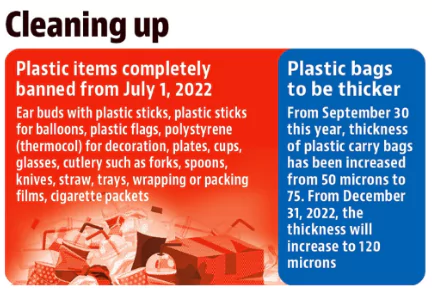
-
- 2018: On June 5, 2018, to mark the World Environment Day, the Indian Prime Minister announced that India would phase out single use plastics by 2022.
- 2021: On August 12, 2021, a ban on identified single use plastic items was notified (came into force on July 1, 2022) by the Ministry of Environment, Forest and Climate Change (MOEFCC) via the Plastic Waste Management Amendment Rules, 2021.
- For the first time India defined SUP.
- The remaining single-use plastic items, comprising mostly packaging products, are covered under the Extended Producer Responsibility (EPR) policy introduced by the MOEFCC in 2022.
- The Plastic Waste Management Rules, 2016: It stated that urban local bodies should ban less than 50 micron thick plastic bags and not allow the usage of recycled plastics for packing food, beverage or any other eatables.
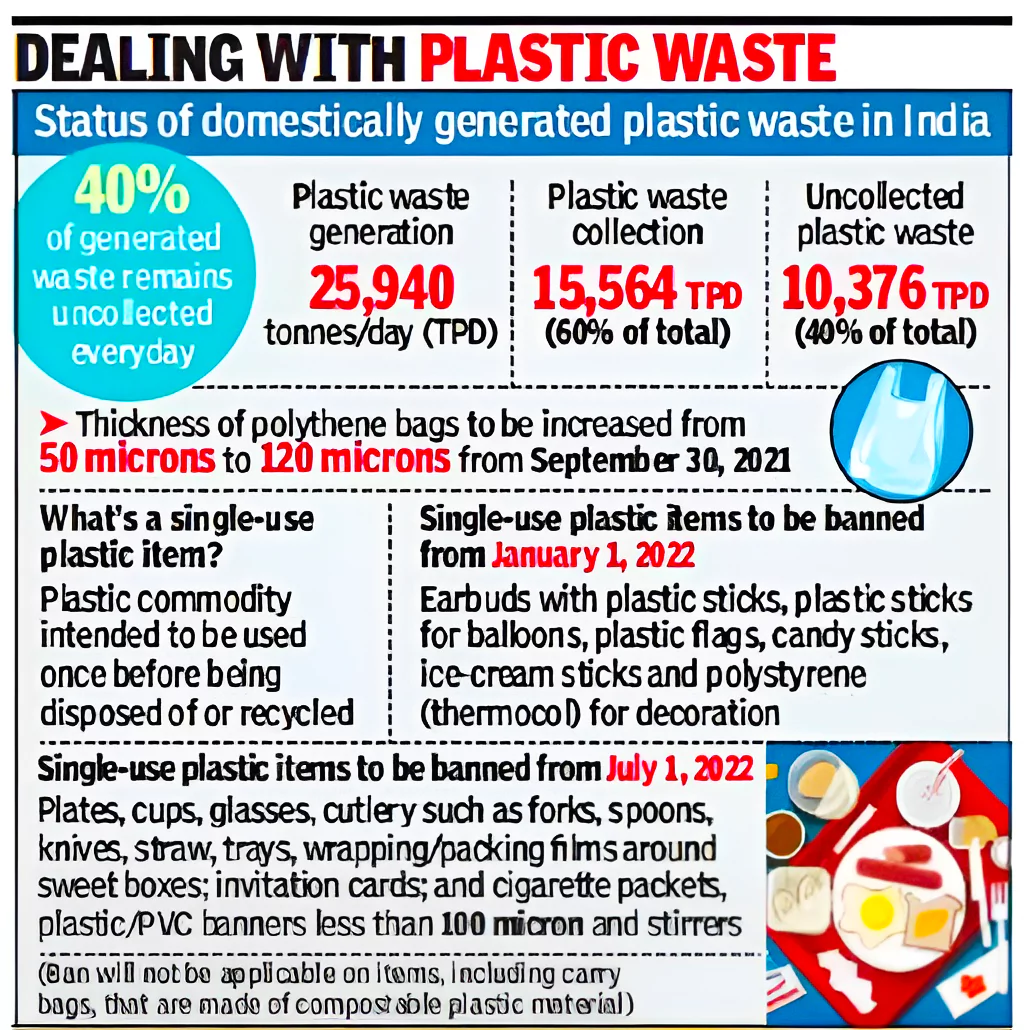 It introduced the concept of EPR to manage plastics in India.
It introduced the concept of EPR to manage plastics in India.
- Plastic Waste Management (Amendment) Rules, 2022: The guidelines on EPR coupled with the prohibition of identified single use plastic items.
- It banned the manufacture, import, stocking, distribution, sale and use of carry bags made of virgin or recycled plastic less than seventy-five micrometers.
- Swachh Bharat Mission – Urban 2.0: Every Urban Local Bodies is required to adopt 100% source segregation of waste, and have access to a Material Recovery Facility for sorting the dry waste (including plastic waste) into further fractions for recycling and/ or processing into value-added products.
- This is aimed to reduce plastic and dry waste ending up in dumpsites or waterbodies.
- It also focused on identification and creating awareness for plastic alternatives.
- Establishment of Special Task Forces: These were formed in all states and union territories to eliminate single use plastics and manage plastic waste.
- A National Level Taskforce was established to coordinate efforts nationwide.
- Ban on Products: Various directions were issued to stop supplying plastic raw materials for banned items, revoke the licenses of banned plastic producers, and stop the import of banned items.
- Redressal Platforms: Online platforms were created for monitoring and grievance redressal.
- Awareness Campaigns: Assistance and awareness programs were provided to MSMEs for transitioning to eco-friendly alternatives.
- Enforcement campaigns were carried out across India.
-
About Comprehensive Action Plan:
- Issued by: In February 2022, it was issued by the Central Pollution Control Board (CPCB) to all the State Pollution Control Boards (SPCBs) and the Pollution Control Committees (PCCs).
- Aim: To deal with the single use plastics issue and its phasing out.
- Components: The Action Plan comprises following four parts
| Components/Parts |
Deal With |
| Supply-Side Interventions |
- Stopping supply of plastic raw materials
- Stopping manufacture of banned single use plastic (SUP) items
- Stopping sale of banned SUP items
(*SMS- Stop Supply, Manufacturing & Sale) |
| Demand-Side Interventions |
- Stopping usage of banned SUP items
- Directions Issued by CPCB:
- To 18 plastic raw-material manufacturers, 9 sellers of single use plastics and 30 e-commerce companies for phasing out of SUP.
- Letters were issued to all SPCBs and PCCs, Chief Secretaries of all the states, and customs authorities for regulating/stopping import.
|
| Creating An Enabling Environment for Phasing Out single use Plastics |
- Promoting alternatives to single use plastics (SUPs)
- Creating awareness on phasing out SUPs
(*AA- Alternatives & Awareness) |
| Managing SUP Legacy Waste |
- It focused on developing guidance documents for various processing technologies available in the Indian market.
- Available Platforms: For effective monitoring of the ban on identified SUPs and plastic waste management in India, the following online platforms are in operation:
- CPCB Monitoring Module for compliance on elimination of SUP
- CPCB Grievance Redressal App
|
India’s Comprehensive Approach to Tackling Plastic Pollution
- A part of Legal Binding Treaty: In 2022, 124 countries, parties to the United Nations Environment Assembly, including India, signed a resolution to draw up an agreement which will in the future make it legally binding for the signatories to address the full life of plastics from production to disposal, to end plastic pollution.
- International Convention for the Prevention of Pollution from Ships (MARPOL): India is a member of MARPOL.
- It is the main international convention covering prevention of pollution of the marine environment by ships from operational or accidental causes.
- The MARPOL Convention was adopted on 2 November 1973 at IMO.
- India Plastics Pact: It was launched in September 2021. It aims to create a circular economy for plastics in India by holding its signatories to four ambitious and time-bound targets.
- Project REPLAN: It stands for REducing PLastic in Nature. It aims to make carry bags by mixing processed and treated plastic waste with cotton fiber rags in the ratio of 20:80.
- Un-Plastic Collective: It is co-founded by the Confederation of Indian Industry, United Nations Environment Programme and WWF-India, a movement to minimize single use plastic.
- GloLitter Partnerships Project: It is launched by the International Maritime Organization and the Food and Agriculture Organization of the United Nations to prevent and reduce marine plastic litter from shipping and fisheries.
- India, a Lead Partner Country (LPC) under the GloLitter Partnerships Project has now published its National Action Plan (NAP) for management and prevention of sea-based marine plastic litter.
About Plastic Overshoot Day:
- Every year, there is a day when the amount of plastic waste surpasses the capability of waste management systems to manage this. Environment Action, a Swiss-based organization, calls it Plastic Overshoot Day.
|
Way Forward:
- Upgradation of Capacity Building: Capacity building of government officials needs to be upgraded with regard to structured field inspection. Inspection teams should also be equipped with required instruments.
- Mandatory Public Disclosure: Local governments and states should be mandated by the CPCB and MOEFCC to put out quarterly updates on their websites in the format provided to the Chairmen of all the SPCB/PCCs.
- Focus on Accountability: CPCB required that states submit a report on enforcement every fortnight. There should be provision to include the information sought in the Annual Report published by the CPCB as per the Plastic Waste Management Rules, 2016.
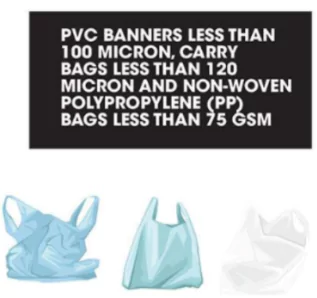 Work on Transparency: CPCB will have to start sharing the data that it collects from private players through the EPR and the state authorities through the SUP monitoring module.
Work on Transparency: CPCB will have to start sharing the data that it collects from private players through the EPR and the state authorities through the SUP monitoring module.- Strict Ban on Plastic Bags: Carry bags irrespective of thickness should be banned similar to the successful bans in East African countries (Tanzania and Rwanda) and Himachal Pradesh.
- Himachal Pradesh through its Non-biodegradable Garbage Control Act of 1998 has completely banned the production, distribution, storage and use of carry bags.
- Invest in the SUP Alternatives: By providing cost-effective and convenient options. There is a need for supportive infrastructure and incentives should be provided to encourage the production of alternatives in large volumes.
- Adopt a Reusable Packaging System: India should focus on reusable packaging systems which would help both in economical and environmental sustainability.
- The reuse systems reduced the quantity of materials required, and had a 21% return on investment with a 2 to 3-year payback period.
- Phasing Out in Priority Manner: Unnecessary and non-recyclable plastics need to be phased out on priority.
- Strict Enforcement of Laws & Regulations: The enforcement of the ban on single use plastics has been poor and needs to be strengthened.
To get PDF version, Please click on "Print PDF" button.
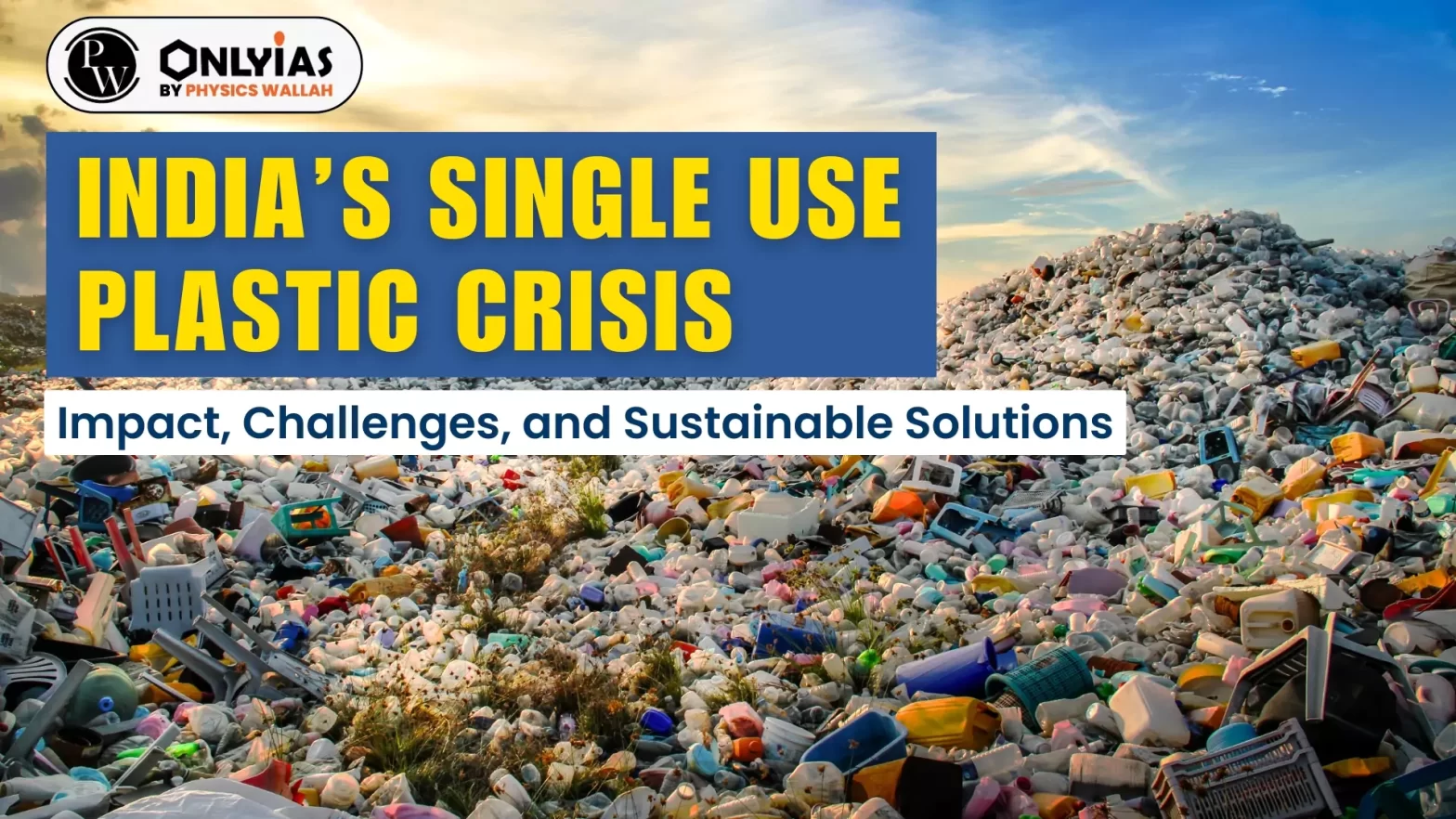



 It introduced the concept of EPR to manage plastics in India.
It introduced the concept of EPR to manage plastics in India. Work on Transparency: CPCB will have to start sharing the data that it collects from private players through the EPR and the state authorities through the SUP monitoring module.
Work on Transparency: CPCB will have to start sharing the data that it collects from private players through the EPR and the state authorities through the SUP monitoring module.